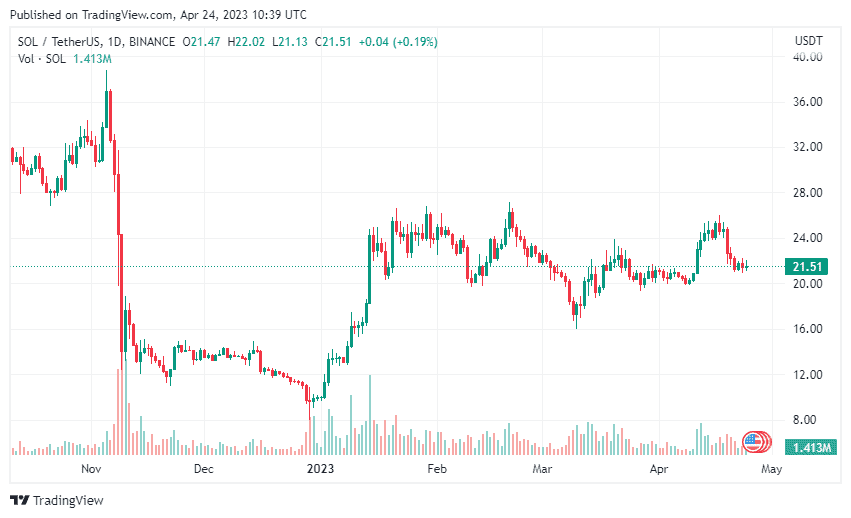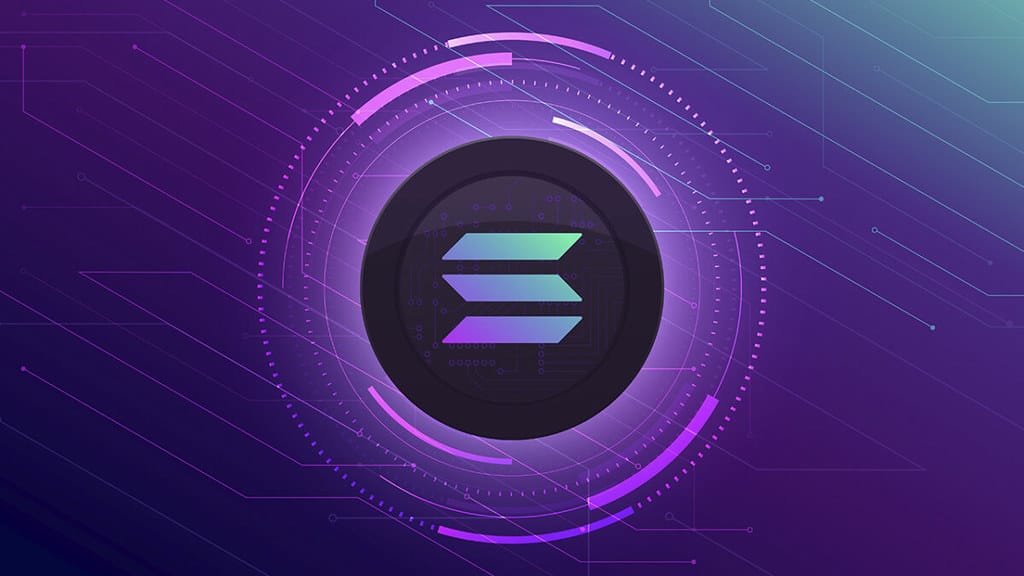Solana (SOL), one of the fastest-growing cryptocurrencies, is currently facing a bearish sentiment in the market. The asset, which had been holding steady above $20 since mid-January, has seen a 15% drop in price in the last seven days.
Last year, SOL’s price suffered after the collapse of Alameda Research and FTX, which led to key investors pulling out from the Solana blockchain. The asset gradually started recovering in 2023, recording rallies and pullbacks until it hit $25 on January 21 before retracing.
Recent events have also affected Solana’s price, with the crypto market exhibiting signs of fear due to the threat of economic recession. At the time of writing, SOL’s price stands at $21.51, with a decrease of about 2.61% in the daily chart.

Despite the bearish trend, Solana’s price remains above its 200-day Simple Moving Average, giving hope of a long-term revival. However, SOL’s Relative Strength Index confirms the bearish trend.
SOL’s trading volume is up by over 30.26% today, and its support level is at $19.87, with resistance levels at $23.99. Analysts predict that the asset will likely drop below $20 in the short term, but the $19.87 support level could be the pivot point for an uptrend if the bulls prevail.
Solana Sees Strong Q1 Growth
Solana, the blockchain platform, has experienced a strong start to the year, according to the latest State of Solana report from Messari. The report revealed that Solana’s market capitalization has increased by 118.1% QoQ, along with a 68.7% QoQ growth in revenue, thanks to the adoption of priority fees.
The report also highlighted several ecosystem developments that have driven fee payer and transaction activity, including the BONK airdrop, NFT collections, and DePIN applications. Liquid staking derivatives (LSDs) also saw significant growth, led by Marinade Finance, Lido, Jito, and JPool.
The Solana Foundation’s growth initiatives to invest in its ecosystem continued, including the Grizzlython hackathon, which became the largest in Solana’s history. Additionally, the average number of validators increased by 18.9% QoQ, signaling a move towards a more decentralized network.
However, the report also revealed some challenges that Solana faced during the first quarter. Shortly after the release of the v1.14 upgrades on February 21, the network experienced an outage. Plans to improve the upgrade process followed.
Despite the challenges, the report shows that the network remains competitive, with daily unique fee payers and transactions bouncing back from the Q4 lows and remaining steady through Q1.
Moreover, the platform’s TVL (Total Value Locked) across DeFi applications also remained consistent while new NFTs and games continued to launch and gain traction. The DePIN space also drove incremental network activity.
The network’s progress toward its long-term goals is promising, and the platform looks to continue its growth strategies, build community, and pursue its robust plans for 2023.
Related Reading | Cardano Bucks Market Trend With Over 22% Surge In NFT Volume

